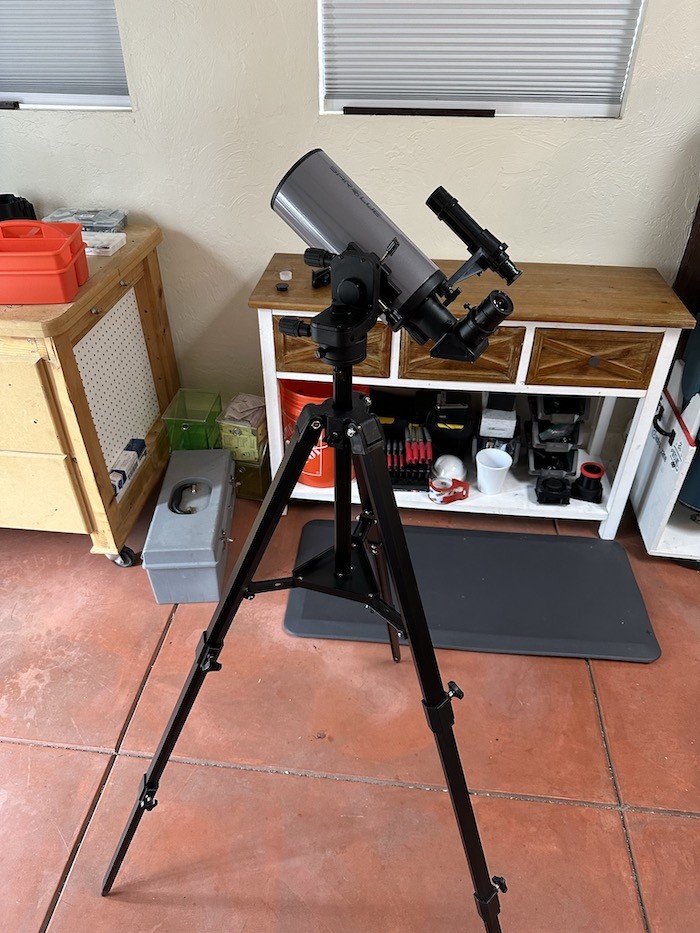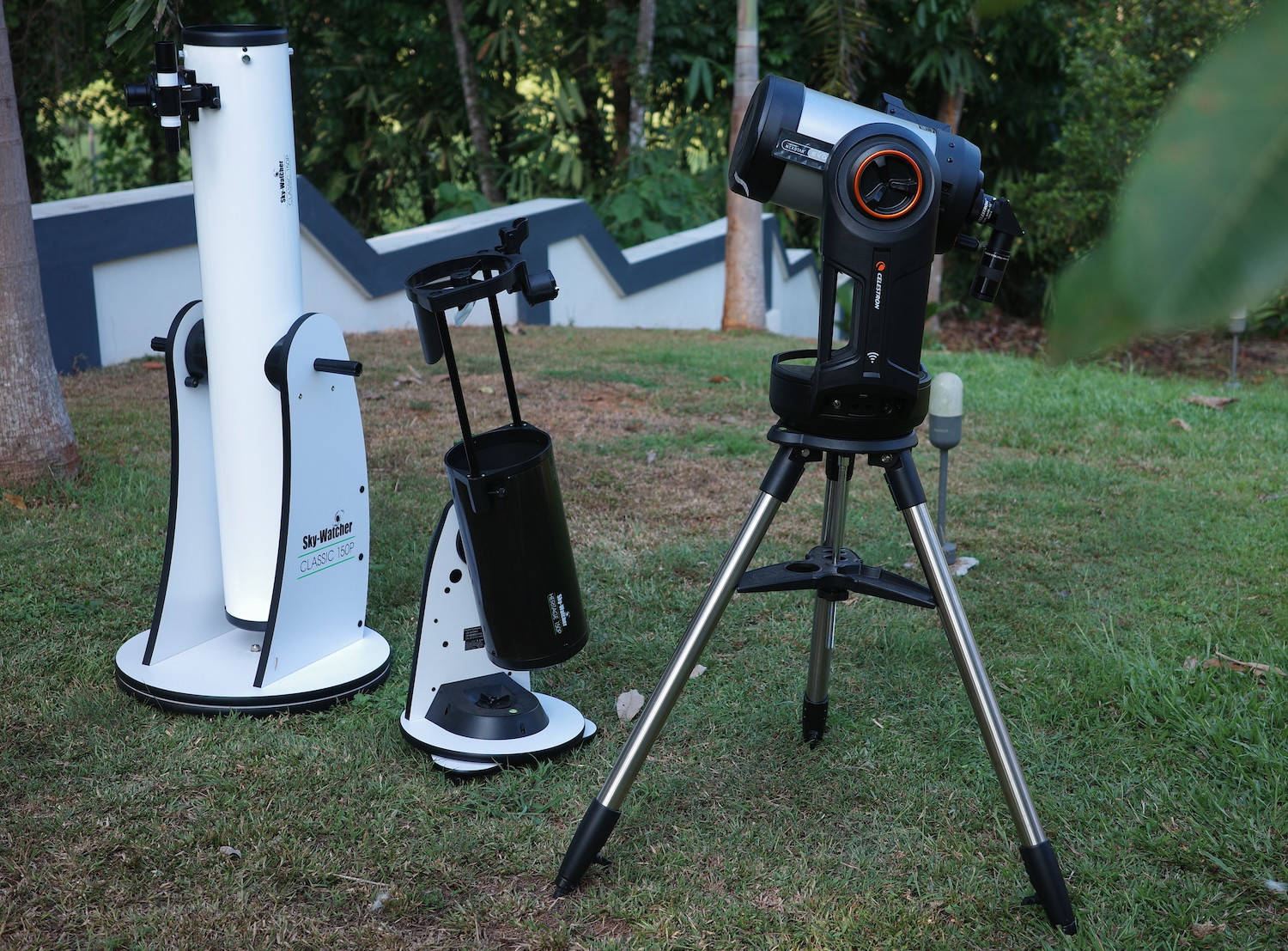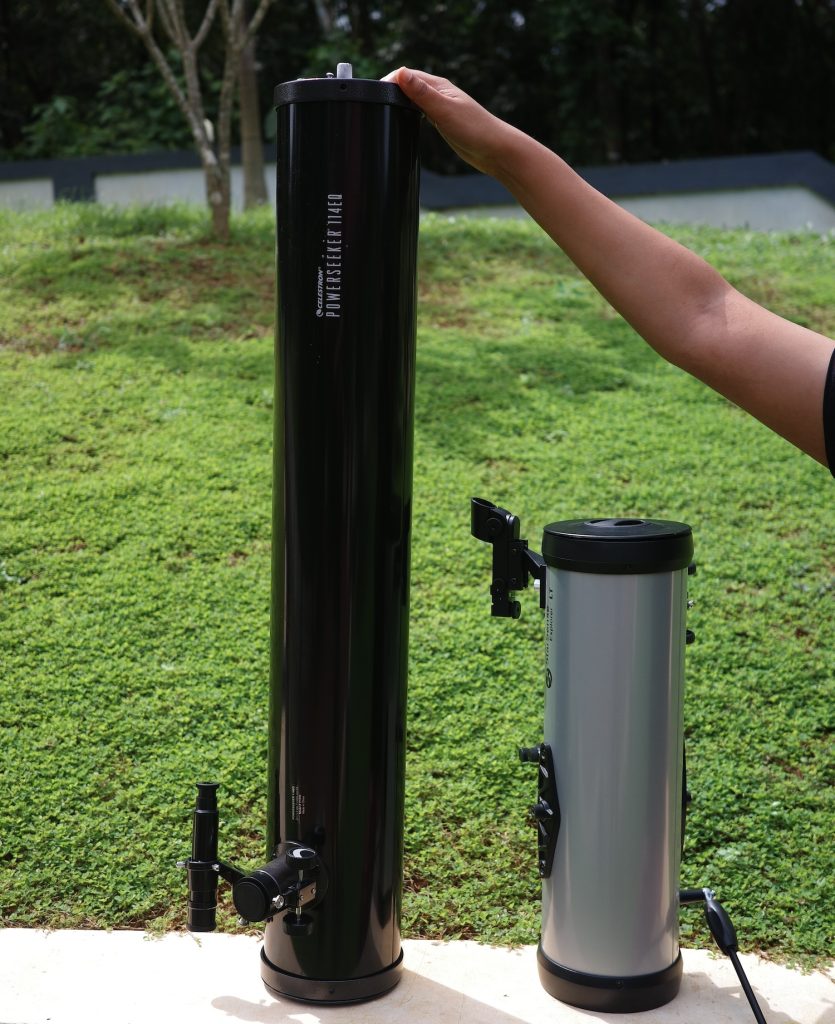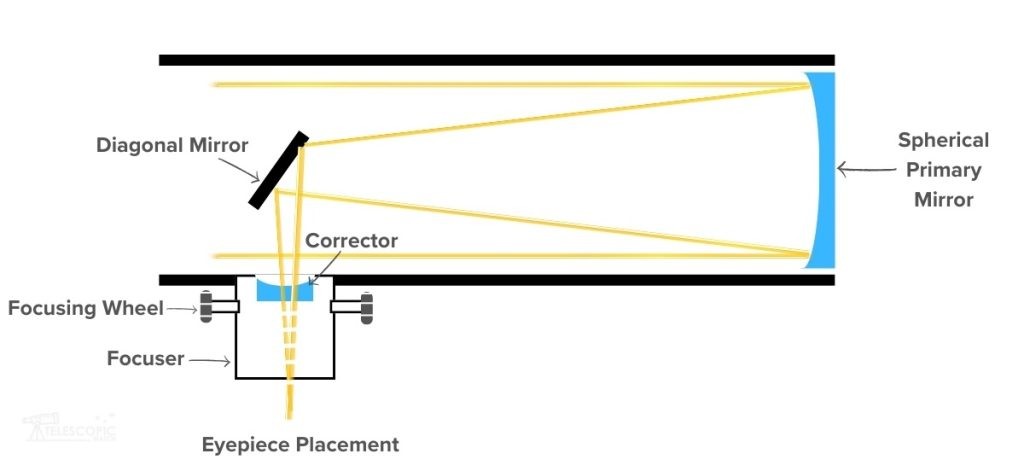Portability Myth of Large Schmidt-Cassegrains
While smaller catadioptric telescopes can be extremely convenient and compact instruments, don’t read too much into the “compactness” or “portability” of larger Schmidt-Cassegrains.
I believe that the catadioptric telescopes’ compactness at larger apertures to be really overstated. These telescopes also tend to be severely constrained to a fairly narrow field of view, especially at larger apertures.

While I love my small 2.5″ SarBlue Mak70 Maksutov Cassegrain for its compactness than any comparable tabletop Dobsonian telescope setups, the reality is that a larger 8” Schmidt-Cassegrain is about as heavy in total and takes up as much physical volume as an 8” Dobsonian telescope with a solid tube, though it might still fit into a slightly smaller given space.
Newer, more innovatively designed Dobsonians like the Heritage/Virtuoso GTi from Sky-Watcher are just as compact as their 5” and 6” catadioptric counterparts, while costing less than half as much.

At larger apertures than 10”, any advantage of convenience, portability, or compactness that catadioptrics could have over Dobsonians goes out the window.

For example, the Celestron C11 and the most compact mount I could come up with for it fill up a smaller car, while my Explore Scientific 10” Hybrid Dobsonian—a truss tube Dob— can fit in the passenger seat of my tiny roadster when broken down and leaves me room to throw a chair in the trunk. The C11 can barely be set up at all by one person unassisted, whereas the 10” Hybrid can be carried around as a single unit by a single person unassisted.
At larger sizes, it just gets ridiculous.
A 16” Schmidt-Cassegrain requires a permanent setup or even an observatory since just lifting it onto its mount is an enormously difficult task. Meanwhile, a commercial 16” Dob can be set up and transported with relative ease by one person, while lightweight premium designs will still fit in a passenger seat. A premium 16” Dob will set you back less than even the most basic mounting capable of supporting a 16” catadioptric.
Bird-Jones: The Low-Cost “Compact” Hobby Killer Design

It need not be said that many beginner telescopes just have bad optics. But a certain kind, the Bird-Jones, attempts to leverage this in a creative way.
Bird-Jones telescopes are Newtonian-reflecting telescopes with a spherical mirror and a “corrector lens” somewhere in the optical path that changes the path of light going through the telescope to focus as though the mirror were parabolic.

The corrector lens typically increases the focal length of the telescope by 50–100%, yielding higher magnification with a given eyepiece than the mirror would without the corrector.
Properly executed with a corrector lens attached before the diagonal secondary mirror, the Bird-Jones design can work okay. However, commercial manufacturers don’t really implement the true Bird-Jones design.
What I’ve witnessed is that the primary mirror in these commercial telescopes is simply whatever shape came off the polishing machine and the “corrector lens” is a piece of plastic inserted within the telescope’s focuser draw tube/eyepiece holder. You can’t usually line up the telescope’s mirrors (collimate) accurately enough to yield a sharp image with these telescopes. Even if you do, they are not as crisp as a properly made telescope of the same aperture and their sharpness quickly drops off towards the edges of the field of view.
For the purposes of manufacturers seeking to make as much profit as possible, the Bird-Jones design, or at least their lazy implementation of it, is awesome. It allows them to neglect making a primary mirror of any decent optical quality standard at all and cram it into an extremely short and stubby tube that costs less to ship overseas.
The longer focal length of these Bird-Jones telescopes means it’s simpler to achieve very high (usually too high) magnifications with them. The “compact” design of the tube is parroted as a design plus the same way more expensive Cassegrain-type catadioptric telescopes are (though Cassegrains and their derivatives are actually capable of yielding sharp images).
The 114mm aperture x 1000mm focal length, 127mm x 1000mm, and 150mm x 1400mm Bird-Jones telescopes are universally bad optically (as well as mechanically in most cases) and should be avoided at all costs. Do not even consider purchasing any “Newtonian” telescope that does not have a tube that is about the same physical length as the number provided as the telescope’s focal length. If there is a large discrepancy (i.e., the focal length is quite a bit longer than the tube), it is a Bird-Jones.
